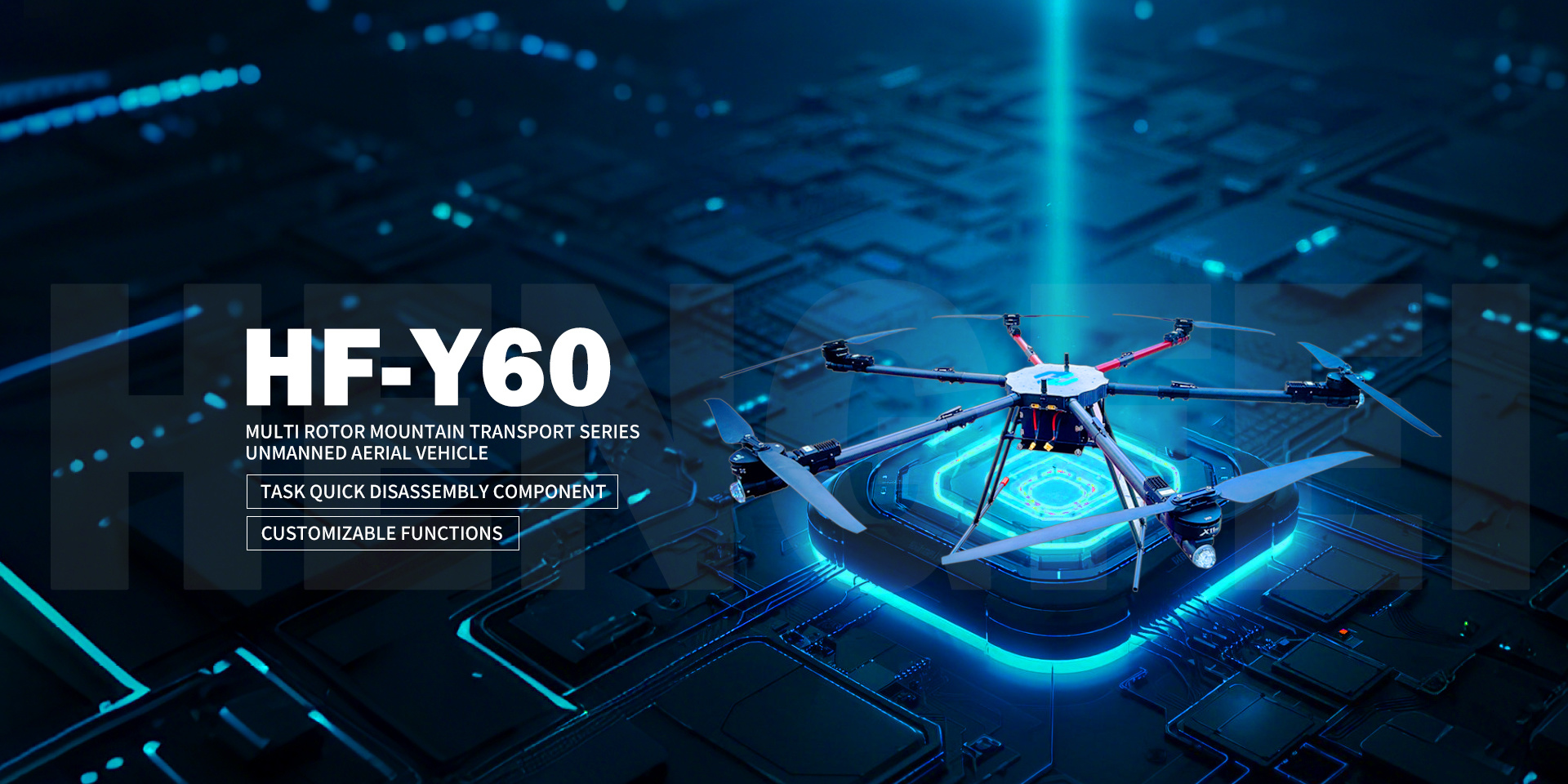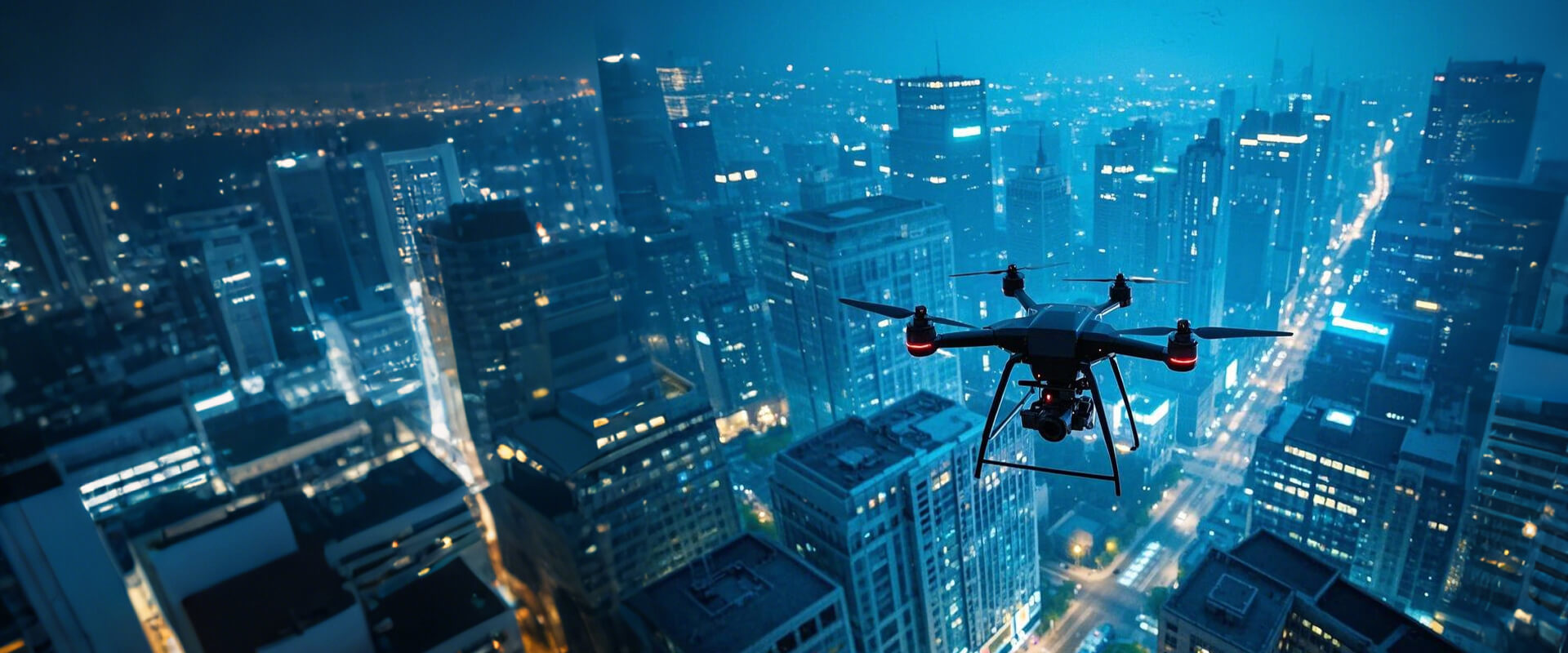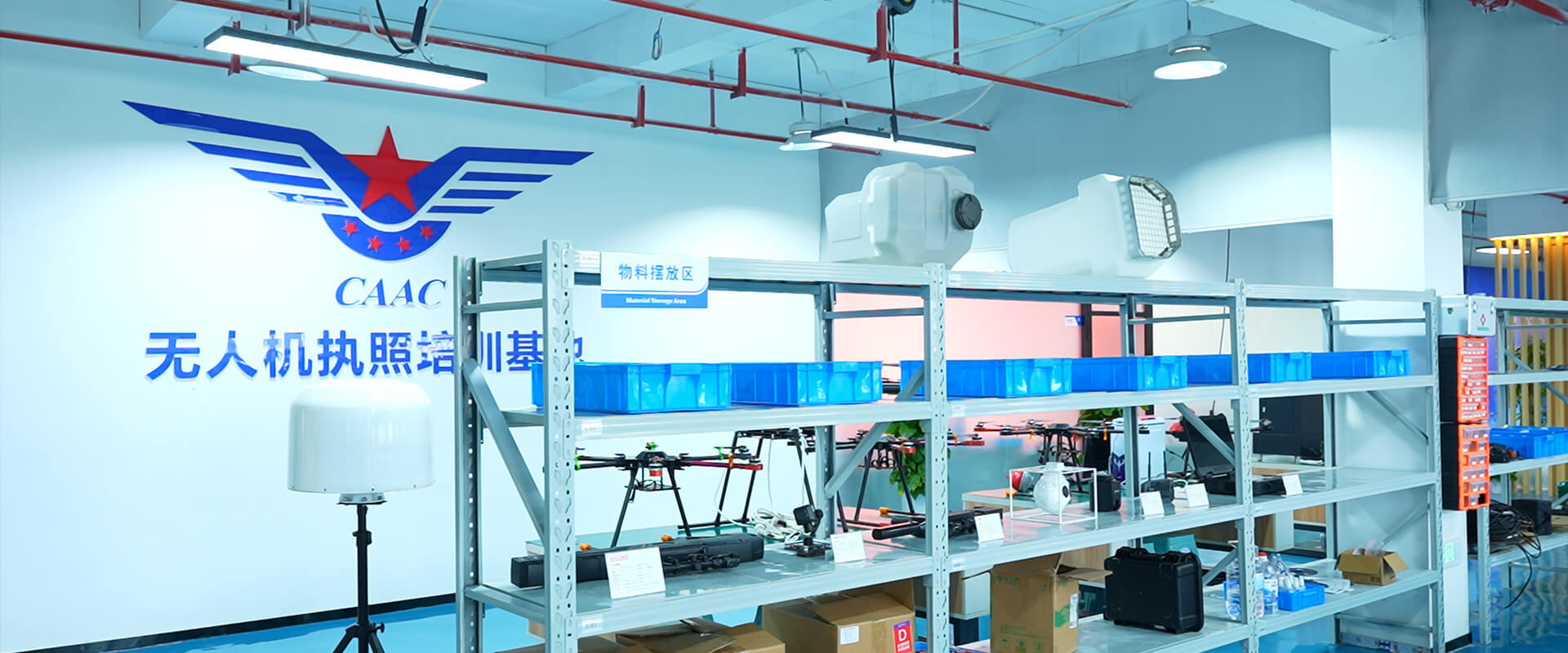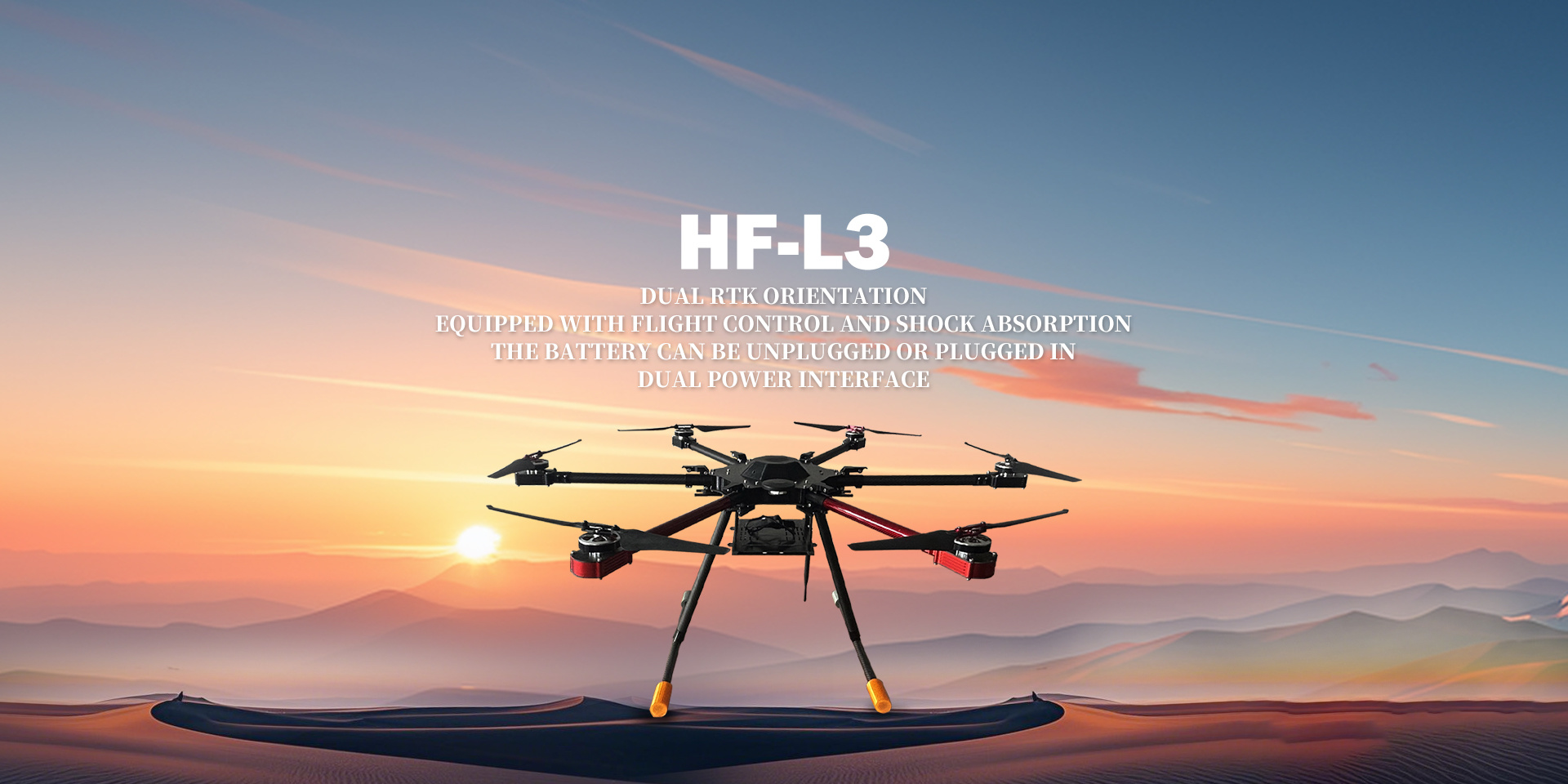-
HengfeiGuizhou Hengfei Technology Co., Ltd., relying on a comprehensive and advanced full-industry-chain ecosystem thinking and industrial development concept, builds an integrated system covering general assembly integration, R&D, production and manufacturing, general aviation services, full-industry-chain services, application scenario construction, and low-altitude economic integrated application operation services derived from the industrial chain; providing professional technology, equipment supply, professional personnel, solutions, supporting facilities, and financing for comprehensive services.

-
ProductIs a low-altitude economic comprehensive operation service provider integrating the manufacturing and sales of intelligent unmanned aerial vehicles, the research and development of intelligent robots, the development of low-altitude economic application scenarios, flight training, general aviation services, surveying and mapping, technical services, and technical consulting.

-
ApplicationIs a low-altitude economic comprehensive operation service provider integrating the manufacturing and sales of intelligent unmanned aerial vehicles, the research and development of intelligent robots, the development of low-altitude economic application scenarios, flight training, general aviation services, surveying and mapping, technical services, and technical consulting.

-
R&DGuizhou Hengfei Technology Co., Ltd., relying on a comprehensive and advanced full-industry-chain ecosystem thinking and industrial development concept, builds an integrated system covering general assembly integration, R&D, production and manufacturing, general aviation services, full-industry-chain services, application scenario construction, and low-altitude economic integrated application operation services derived from the industrial chain; providing professional technology, equipment supply, professional personnel, solutions, supporting facilities, and financing for comprehensive services.

-
TrainingStarting in 2020, we began using drones in the traditional industry, and the company sent four people to learn how to fly drones and obtain pilot licenses issued by the Civil Aviation Administration. In line with the national development direction, the company initiated a transformation, conducting research and investigations into 16 low-altitude economic industries nationwide.

-
IndustryIs a low-altitude economic comprehensive operation service provider integrating the manufacturing and sales of intelligent unmanned aerial vehicles, the research and development of intelligent robots, the development of low-altitude economic application scenarios, flight training, general aviation services, surveying and mapping, technical services, and technical consulting.

-
ContactGuizhou Hengfei Technology Co., Ltd., relying on a comprehensive and advanced full-industry-chain ecosystem thinking and industrial development concept, builds an integrated system covering general assembly integration, R&D, production and manufacturing, general aviation services, full-industry-chain services, application scenario construction, and low-altitude economic integrated application operation services derived from the industrial chain; providing professional technology, equipment supply, professional personnel, solutions, supporting facilities, and financing for comprehensive services.

-
Language
Low-altitude economy integrated operation service center
Low-altitude economy integrated operation service center
Drone piloting skills mainly include the following aspects
所属分类:
Release time:2025-02-17
来源:
作者:
Basic Operations and Flight Modes Takeoff: In a flat, open area, unlock and slowly push the throttle to feel the lift. Flight: The left hand controls altitude and turning, the right hand manages forward, backward, left, and right movement. Practice hand-eye coordination. Landing: Predict in advance, slow down and land slowly to avoid crashing. Flight Modes: GPS Mode: Automatic hovering, one-button return to home, suitable for beginners' aerial photography. Attitude Mode: No GPS assistance, relies on manual control, suitable for advanced practice. Sport Mode: Fast speed, suitable for advanced challenges. Safe Flight Precautions No-Fly Zones: Absolutely do not enter no-fly zones such as airports and military areas. Weather Conditions: Strong winds, rain, snow, and fog can easily lead to loss of control. Check the weather before takeoff. Battery Management: Do not overcharge or discharge. Pay attention to the battery level throughout the flight and land promptly when the battery is low. Obstacle Avoidance: The drone's visual sensors cannot recognize surfaces without texture features. Make reasonable judgments about the surrounding environment during flight. Advanced Operation Techniques Hovering Practice: Hover at a height of 1 meter and repeatedly adjust until you can hover stably in the air. Flying Practice: In an open, low-wind area, control the drone's yaw left and right to judge the yaw direction. Reaction Speed Practice: Have the drone perform a 180-degree turn to adapt to the drone's orientation changes. Four-Point Hovering and Self-Rotation: Perform four-point hovering and self-rotation at a height of 2 meters to improve control skills. Ten-meter Altitude Horizontal Straight Flight: After stable hovering at point A, fly in a straight line and at a constant speed towards point B. Common Problems and Solutions Power Management: When the remaining power is 10%, it will force a landing. You can push the throttle lever upwards to slow down the landing speed. Signal Obstruction: Avoid flying behind tall buildings during flight to prevent signal obstruction and loss of contact. Interference Sources: Pay attention to interference sources such as kite strings and power poles to avoid affecting the flight.
Basic Operations and Flight Modes
Takeoff: In a flat, open area, unlock and slowly increase throttle after unlocking, feeling the lift.
Flight: The left hand controls altitude and turning, the right hand manages forward, backward, left, and right movement. Practice hand-eye coordination.
Landing: Predict in advance, slowly reduce speed and land to avoid crashing.
Flight Modes:
GPS Mode: Automatic hover, one-button return to home, suitable for novice aerial photography.
Attitude Mode: No GPS assistance, relies on manual control, suitable for advanced practice.
Sport Mode: High speed, suitable for expert challenges.
Safe Flight Precautions
No-fly zones: Absolutely do not enter no-fly zones such as airports and military areas.
Weather Conditions: Strong winds, rain, snow, and fog can easily lead to loss of control. Check the weather before takeoff.
Battery Management: Do not overcharge or discharge. Pay attention to the battery level throughout the flight and land promptly when the battery is low.
Obstacle Avoidance: The drone's visual sensors cannot identify surfaces without textural features. Make reasonable judgments about the surrounding environment during flight.
1
Advanced Operation Techniques
Hovering Practice: Hover at a height of 1 meter and repeatedly adjust until you can hover stably in the air.
Flying Practice: In an open, low-wind area, control the drone's yaw left and right to judge the yaw direction.
Reaction Speed Practice: Have the drone perform a 180-degree turn to adapt to changes in the drone's orientation.
Four-Way Hovering and Self-Rotation: Perform four-way hovering and self-rotation at a height of 2 meters to improve control skills.
2
Ten-Meter Altitude Horizontal Straight Flight: After stable hovering at point A, fly in a straight line and at a constant speed toward point B.
Common Problems and Solutions
Power Management: When the remaining power is 10%, it will force a landing. You can push up the throttle lever to slow down the landing speed.
Signal Obstruction: Avoid flying behind tall buildings during flight to avoid signal obstruction and loss of contact.
Interference Sources: Pay attention to interference sources such as kite strings and power poles to avoid affecting the flight.
Related Documents
RELATED INFORMATION
Contact us for more details
HENGFEI TECHNOLOGY look forward to working with you to create a better future!
- All
- Product Management
- News
- Introduction
- Enterprise outlets
- FAQ
- Enterprise Video
- Enterprise Atlas
Low-altitude economy integrated operation service center
HENGFEI TECHNOLOGY
Telephone:183-0095-0096 (Mr. Deng)
157-6163-4439(Mr. Gao)
E-mail:418903183@qq.com
Operating Headquarters: 24th Floor, Lie Yi International Plaza Office Building, 318 Jinyang North Road, Guanshan Lake District, Guiyang City, Guizhou Province
Production Base: 4th Floor, Factory Building 10, Jinhua Town Intelligent Network Automobile Industrial Park (Nanyuan), Guanshan Lake District, Guiyang City, Guizhou Province


Focus on us


Sweep and add customer service
Copyright © Guizhou Hengfei Technology Co., Ltd. 2025 (gzhfkj.net) All Rights Reserved. Website Construction:Zhonqi Power Guiyang
COOKIES
Our website uses cookies and similar technologies to personalize the advertising shown to you and to help you get the best experience on our website. For more information, see our Privacy & Cookie Policy
COOKIES
Our website uses cookies and similar technologies to personalize the advertising shown to you and to help you get the best experience on our website. For more information, see our Privacy & Cookie Policy
These cookies are necessary for basic functions such as payment. Standard cookies cannot be turned off and do not store any of your information.
These cookies collect information, such as how many people are using our site or which pages are popular, to help us improve the customer experience. Turning these cookies off will mean we can't collect information to improve your experience.
These cookies enable the website to provide enhanced functionality and personalization. They may be set by us or by third-party providers whose services we have added to our pages. If you do not allow these cookies, some or all of these services may not function properly.
These cookies help us understand what you are interested in so that we can show you relevant advertising on other websites. Turning these cookies off will mean we are unable to show you any personalized advertising.

